Over 54% of the extruded aluminum Profile Precision manufactures each year has a hole in it, on purpose, and some have more than 1! The tube is commonly referred to as “structural” or porthole tubing. The Aluminum Association describes these tubes as: “a tube produced by extrusion of a solid billet through a porthole die. The product is characterized by one or more longitudinal extrusion seams.” In this post we are going to look at porthole die extrusion tubing Part 2 of this series will describe seamless extruded tubing which we’ll be offering later this year.
The porthole extruded aluminum tubes we manufacture can be used in a wide variety of industries and applications. Some examples of porthole extruded tube applications are bicycle rims, stethoscopes, telescoping drive shafts, disposable surgical instruments, and aircraft hinges. We produce the tubes in 6061, 6063, and 3003 alloys. For you engineers, they are manufactured to specifications such as ASTM B221 and AMS-QQ-A200/8 to name just a few. In hopes that a picture is worth 1000 words, please see the photos and descriptions that follow:
A 2-piece porthole die is used to produce this 3-void hollow 12mm OD porthole tube.
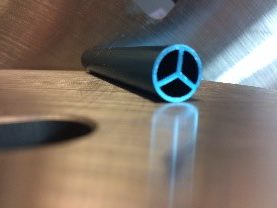
The die is made up of 2 parts. Shown on the right is the Housing, the mandrel which forms the ID(s) is part of the Housing. The Die Plate is shown on the left and forms the outside of the tube. The two pieces are bolted together and placed into the extrusion press.

On the left side of the photo is the extrusion die, with the Housing shown. To the right is our starting stock which is called a billet. During extrusion, the billet is forced into the housing through the 3 openings.
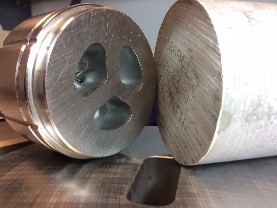
This is a photo looking at the exit end of the Die Plate. The 3 triangular mandrels of the Housing can be seen. These form the voids of the finished 12mm tube shown above.
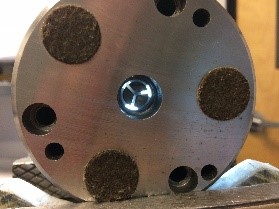
The fully formed extruded tube exits the Die Plate. (We add the blue anodize later.)
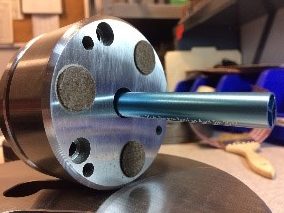
In our next post, we’ll describe how a seamless tube differs from a structural tube and how it’s manufactured. If you have any questions about this topic or would like to ask a question please contact us today.

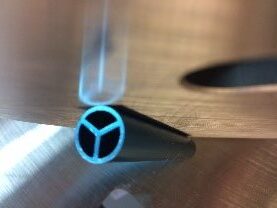

Nice post